
Feel free to add tags, names, dates or anything you are looking for
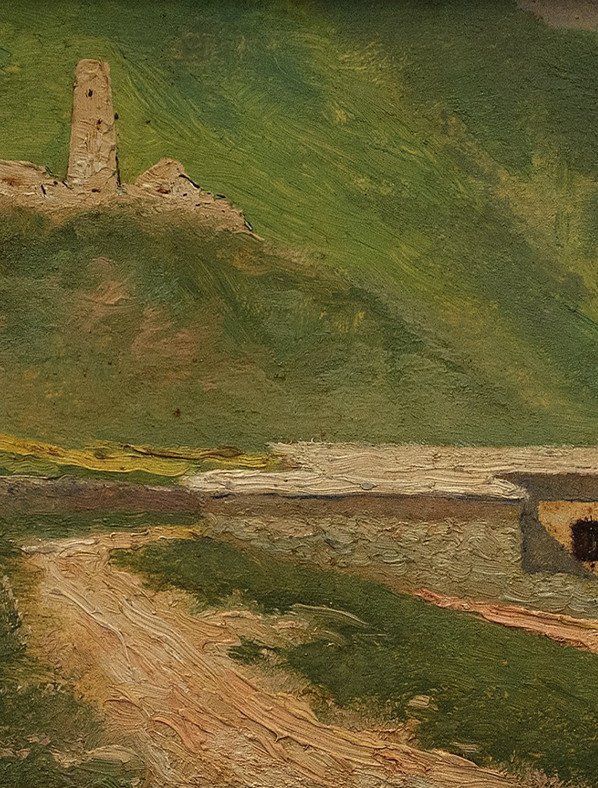
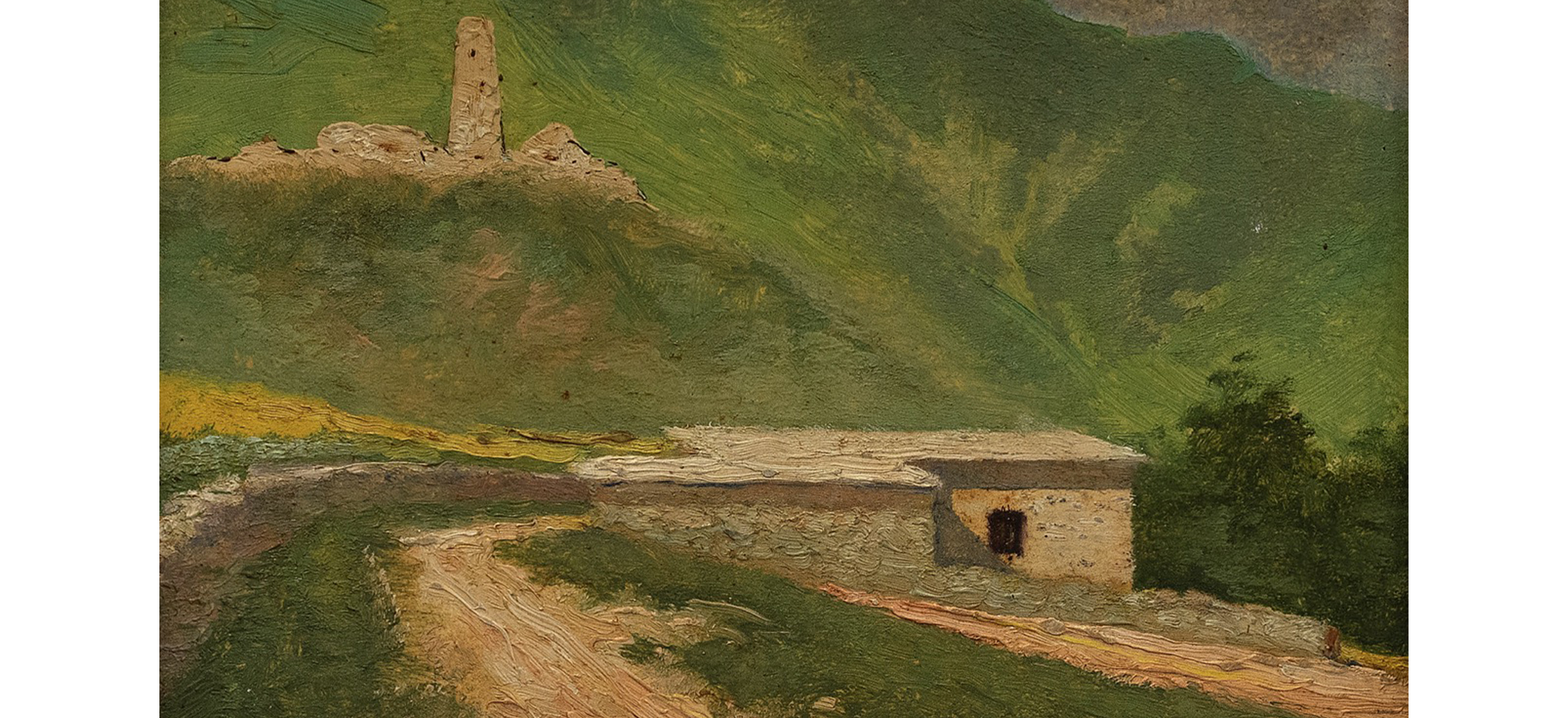
The life of Valerian Sidamon-Eristavi unfolded during a challenging turning point in Georgia's history. A devoted patriot, his deep love for his homeland can be seen reflected throughout his artistic legacy.
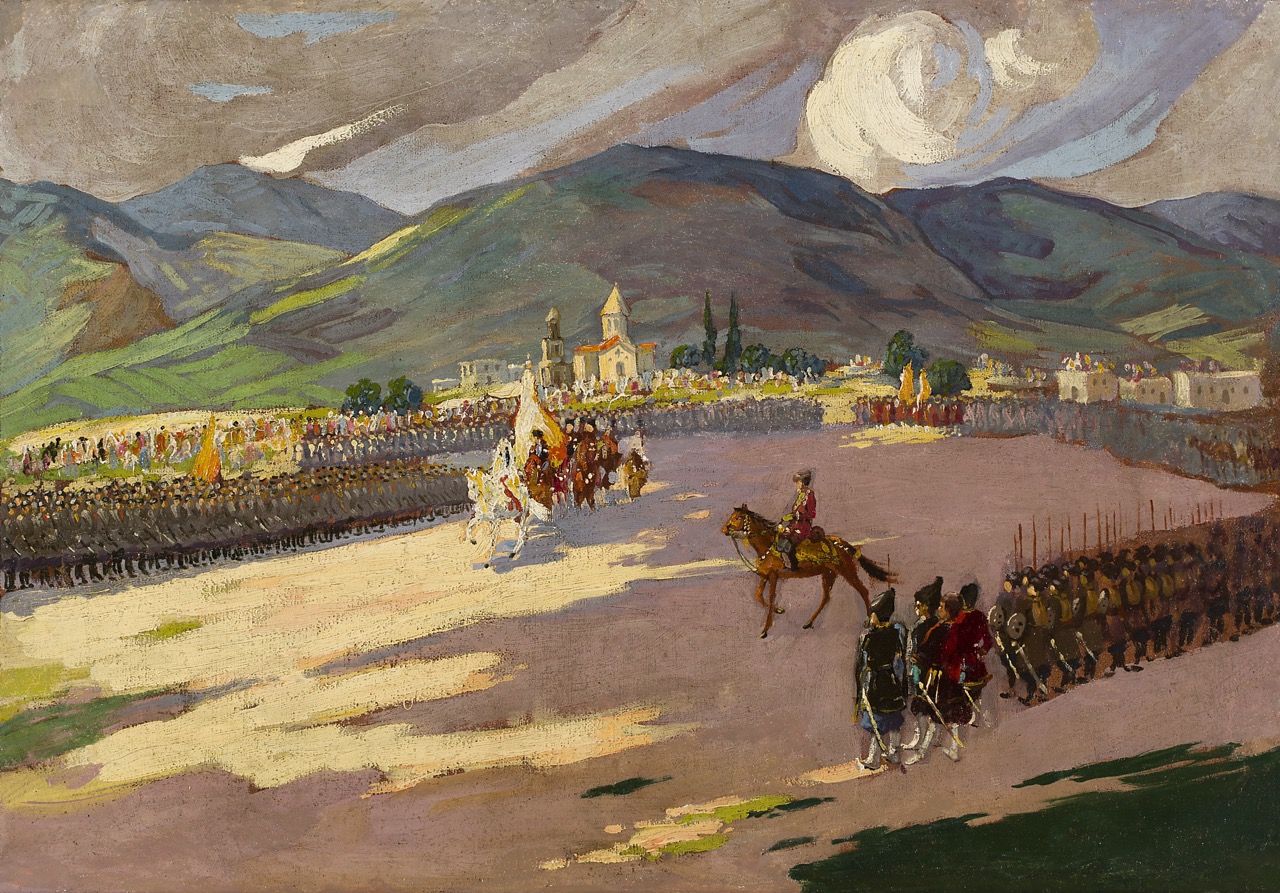
Valerian Sidamon-Eristavi. The Flag of Tamar Unfurled. Oil, canvas. 43x42.5 cm. 1918. Private collection
Valerian Sidamon-Eristavi was born in 1889 in Kvareli, Kakheti. He received his formal education at the Moscow School of Sculpture, Painting, and Architecture, where he studied under several prominent artists, including A. Arkhipov, A. Vasnetsov, and L. Kasatkin, each of whom boasted differing artistic approaches, and each of whom played a significant role in shaping the young artist. As an example, the influence of Arkhipov’s free and energetic brushwork is particularly evident in Sidamon-Eristavi’s early works.
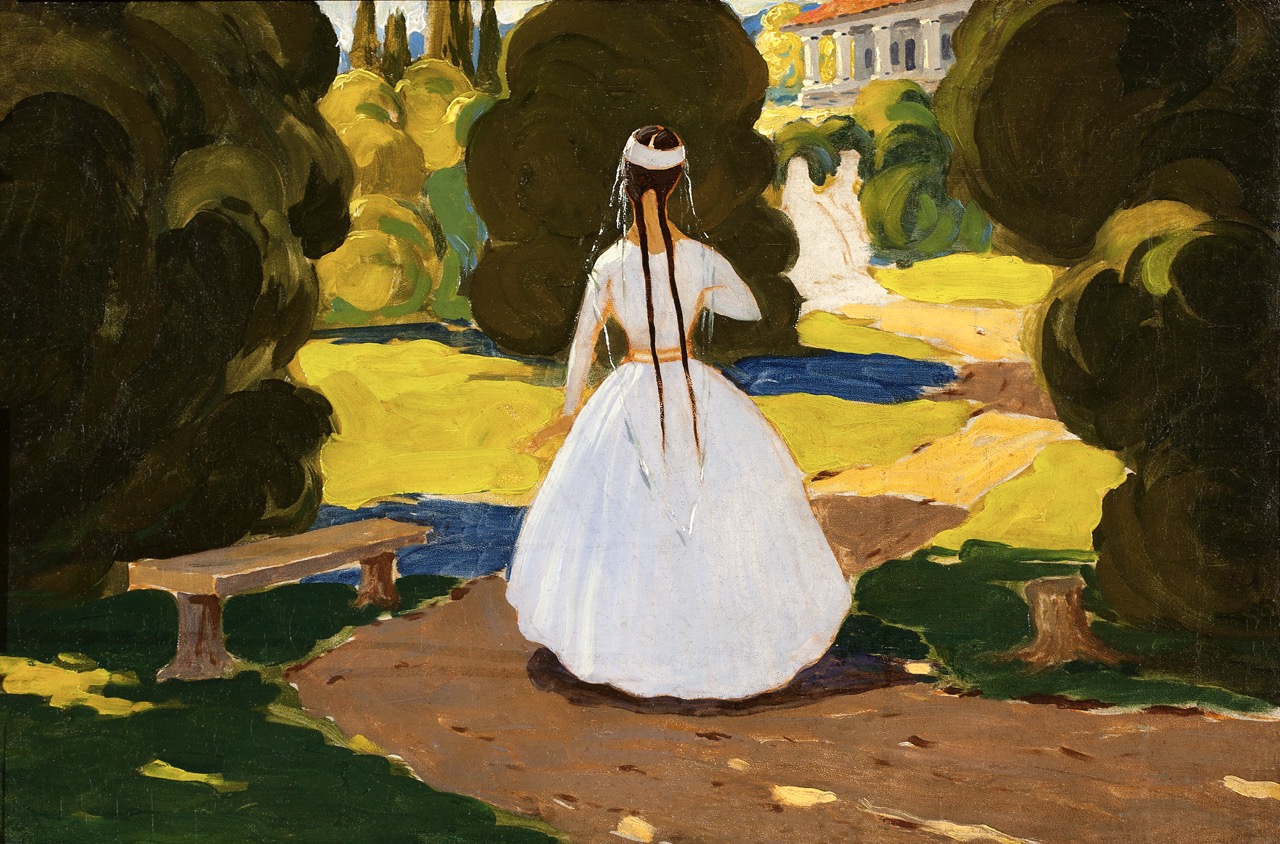
Valerian Sidamon-Eristavi. Walk. Canvas, oil, 35x53 cm. 1920s. Private collection
In the 1910s, Sidamon-Eristavi became involved in the Peredvizhniki (Itinerant) movement, which drew his attention to the social realities of everyday life and the struggles of ordinary people. At the same time, he clearly found inspiration in the mythic and folkloric themes presented in Vasnetsov’s work. When Sidamon-Eristavi returned to his homeland in 1925, he completely submerged himself in Georgian culture. He started teaching drawing in Telavi, and, later, he moved to Tbilisi, seeing the beginning of a versatile journey through the fields of painting, graphics, theater, and cinema.
The landmarks of Sidamon-Eristavi's work were his reflections of Georgia's heroic past. Through his paintings, he sought to inspire Georgian society to maintain its hope and determination to continue its fight for independence.
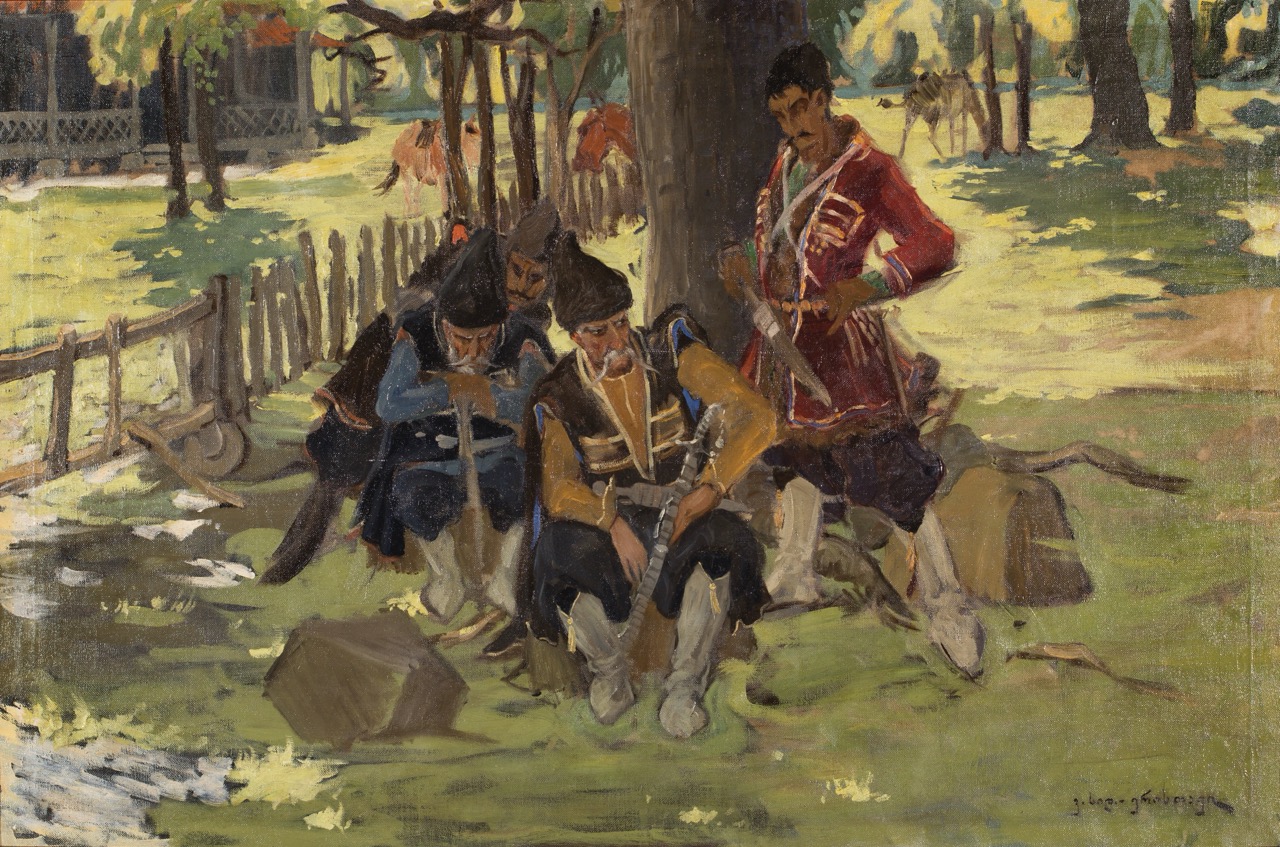
Valerian Sidamon-Eristavi. The Discussion of the Nobles. Oil, canvas. 64x97.5 cm. Private collection
._Oil,_canvas._13x21cm._1910s._ATINATI_Private_Collection._ვალერიან_სიდამონ_ერისთავი._კალოობა._ზეთი,_ტილო._13x21_Large.jpeg)
Valerian Sidamon Eristavi. Threshing the Floor (Kalooba). Oil, canvas. 13x21cm. 1910s. ATINATI Private Collection
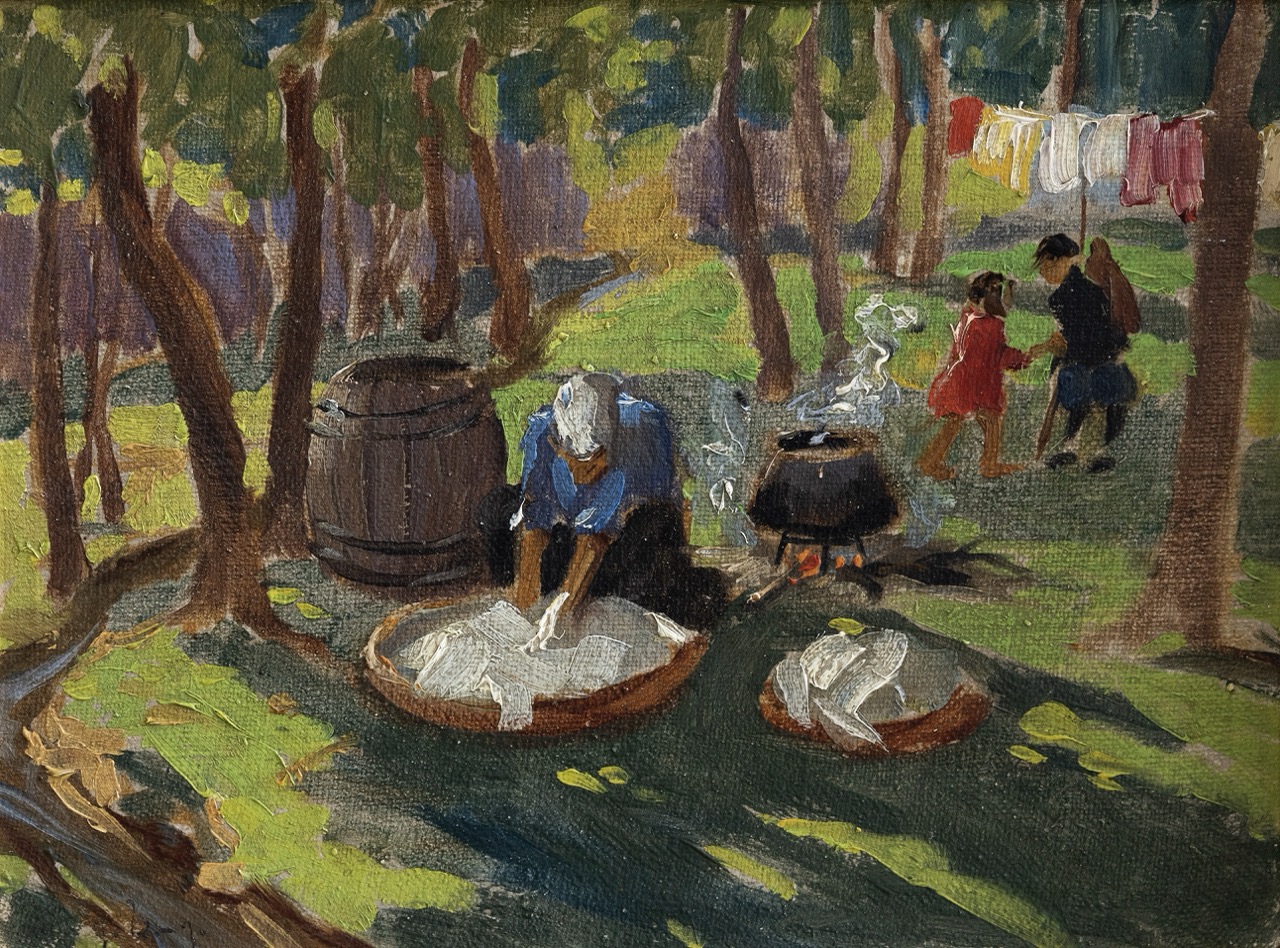
Valerian Sidamon – Eristavi. Doing Laundry. Oil on canvas, mounted cardboard. 16x21 cm. ATINATI Private Collection
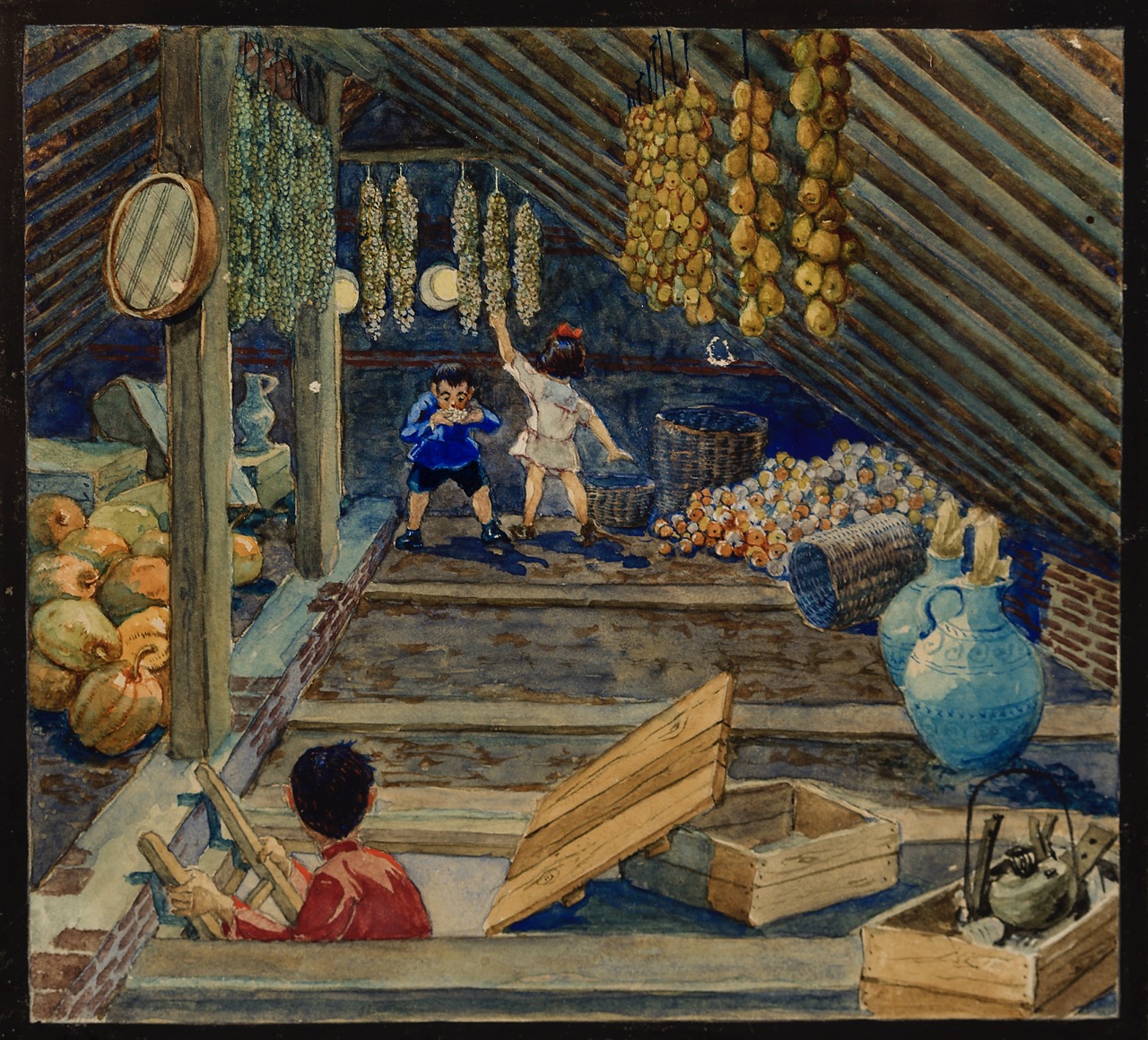
Valerian Sidamon-Eristavi. In the Attic. Paper, mixed media, 10.5x11.5 cm. 1969. Private Collection
While still a student, Valerian Sidamon-Eristavi drew various sketches thematically connected to Georgia's past, demonstrating his choice to make the historical genre the primary focus of his work. In 1917-1919, he painted the following canvases: ‘Queen Tamar’ (1917), ‘The Battle of Krtsanisi’ (1919), ‘The First Battle of Little Kakhi,’ and ‘King Erekle II against the Dagestanis’ (1921-1922).
V. Sidamon-Eristavi added a romantic-legendary element to his historical themes: each of his paintings represented the Georgian people's bravery, unwavering fighting spirit, and the profound drama of their fate.
Such passion and energy is invested in the canvas depicting the ‘Battle of Krtsanisi’! Nature plays an active role in the fatal clash depicted in the painting, with the landscape serving as a crucial element of the drama. The sky is heavy and ominous, filled with dark clouds that seem to surge upward from below, while the expansive Krtsanisi field stretches out before us, teeming with mounted warriors charging recklessly into the depths. This stark contrast intensifies the composition’s sense of movement and urgency.
The scene is rendered in a loose, energetic manner, with each brushstroke capturing form and motion, conveying both physical presence and dramatic tension. The painting is a clear expression of the artist’s distinctive style. Sidamon-Eristavi not only pioneered the historical genre in Georgian painting, but also defined its visual language and thematic direction.
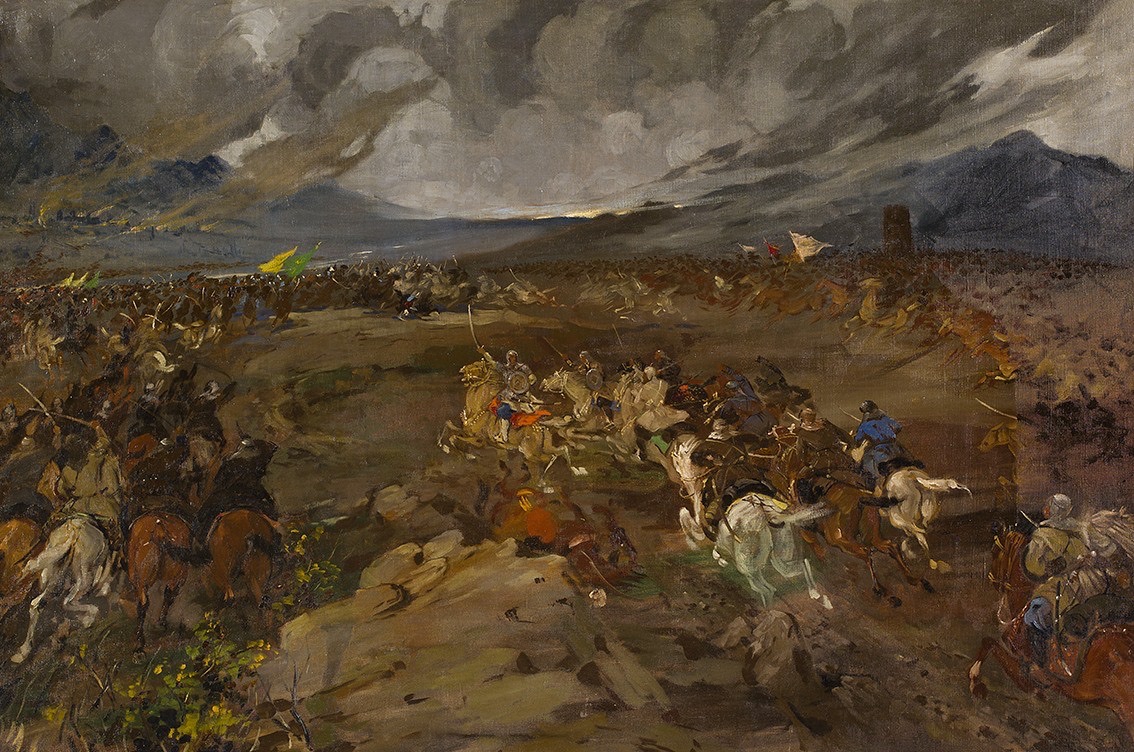
Valerian Sidamon-Eristavi. Battle of Krtsanisi. Oil, canvas, 107x161 cm. 1910-1920s
Sidamon-Eristavi's work coincided with a most terrible period in Georgian history, in which he experienced his homeland's enslavement by the Red Army, and found himself under intense political pressure. Despite the knowledge that democratic reforms were imminent, he could not accept such bloodshed. In 1921, he created the painting ‘Attack of the Red Horsemen,’ a large canvas that presents a striking contrast to the ‘Battle of Krtsanisi.’ The composition is horizontally stretched, with a sharp distinction between sky and terrain. Color plays a critical role in setting the mood on the canvas: the sky is speckled with dense, ornamental stripes in shades of blue, gray, and lilac, giving it a poster-like appearance. This stylization is reinforced by a stark, dramatic depiction of nature. The once lush, hilly landscape of Georgia transforms into a barren, rocky terrain, upon which a Red Army soldier on horseback is etched. His movements are both expressive and mannered. The same dramatic quality defines the cavalry emerging from the horizon, brandishing a forest of red flags. This vivid strip of red spans the entire horizon, evoking imagery of blood and fire. The overall atmosphere is one of intense tension and theatricality.

Valerian Sidamon-Eristavi. The Charge of the Red Horsemen. Oil on canvas, 174x300 cm. 1921. Collection of the Georgian National Museum
Valerian Sidamon-Eristavi viewed the world with a keen and critical eye. He constantly sought character, intensity, and psychological depth in the reality around him. This pursuit found its most expressive form in his portraits. Carefully observing his models, Sidamon-Eristavi had a rare ability to uncover and emphasize their most distinctive traits. As a portraitist, he left us a number of strikingly vivid and psychologically rich portraits — each one capturing not just a likeness, but the inner world of the sitter.
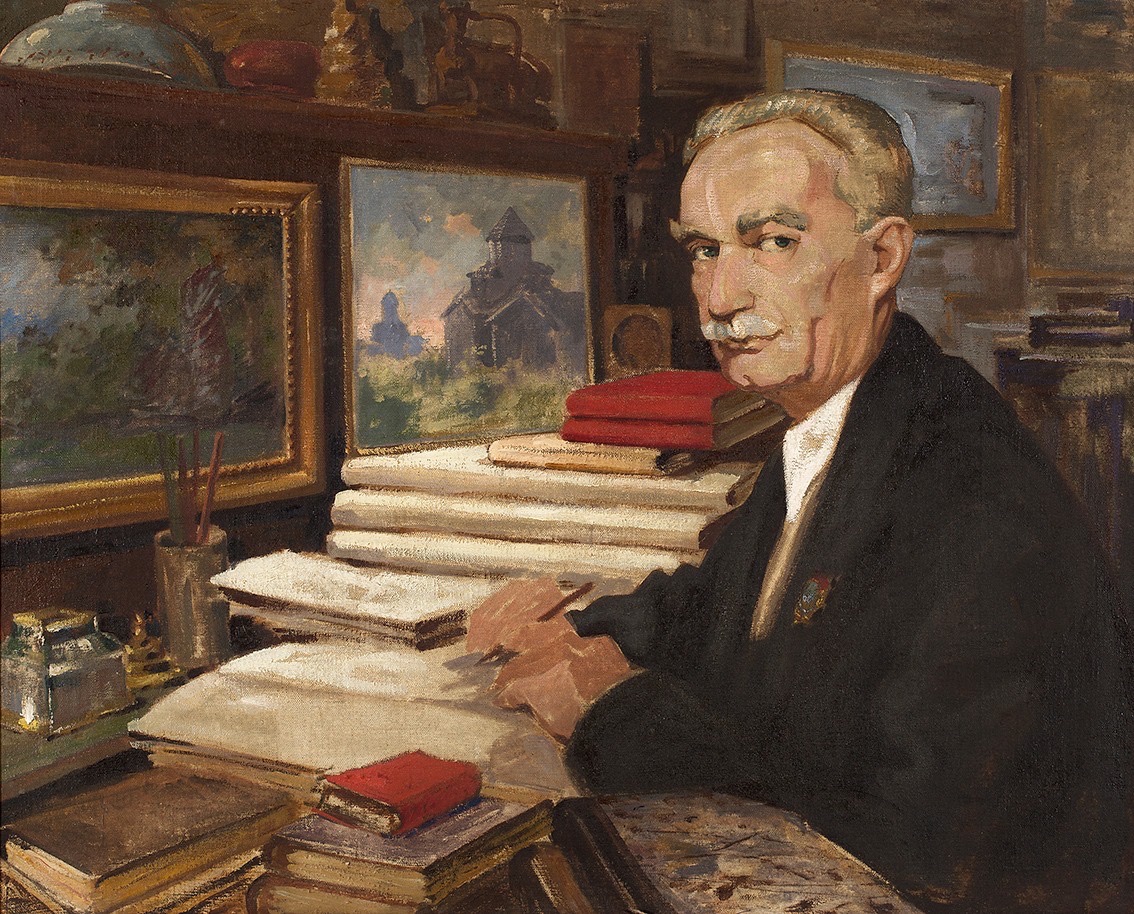
Valerian Sidamon-Eristavi. Portrait of Ivane Javakhishvili. Oil on canvas. 71x88 cm. 1935 – 1942

Valerian Sidamon-Eristavi. Portrait. Oil, canvas. 50.5x37.4 cm.
Sidamon-Eristavi focused much on landscapes in his work, seeing them playing an almost essential role in his thematic compositions. He observed nature through numerous sketches, highlighting the dramatic contrasts of light and shadow, as observed in the ‘Village Yard,’ which shows the influence of the Impressionist style. In it, the color is enhanced by reflections of hues lit by the sun. In some situations, the artist looked upon Georgia's landscapes with a calm, unwavering eye. Almost invariably, his scenery featured an ancient tower or church, conveying his passion for Georgia's history. Indeed, Sidamon-Eristavi valued every element of national life, including the Qvevri sat in the corner of the yard. The wording is slow and quiet, and the colors are subdued. The artist clearly wished to express the objective cultural significance of each detail.
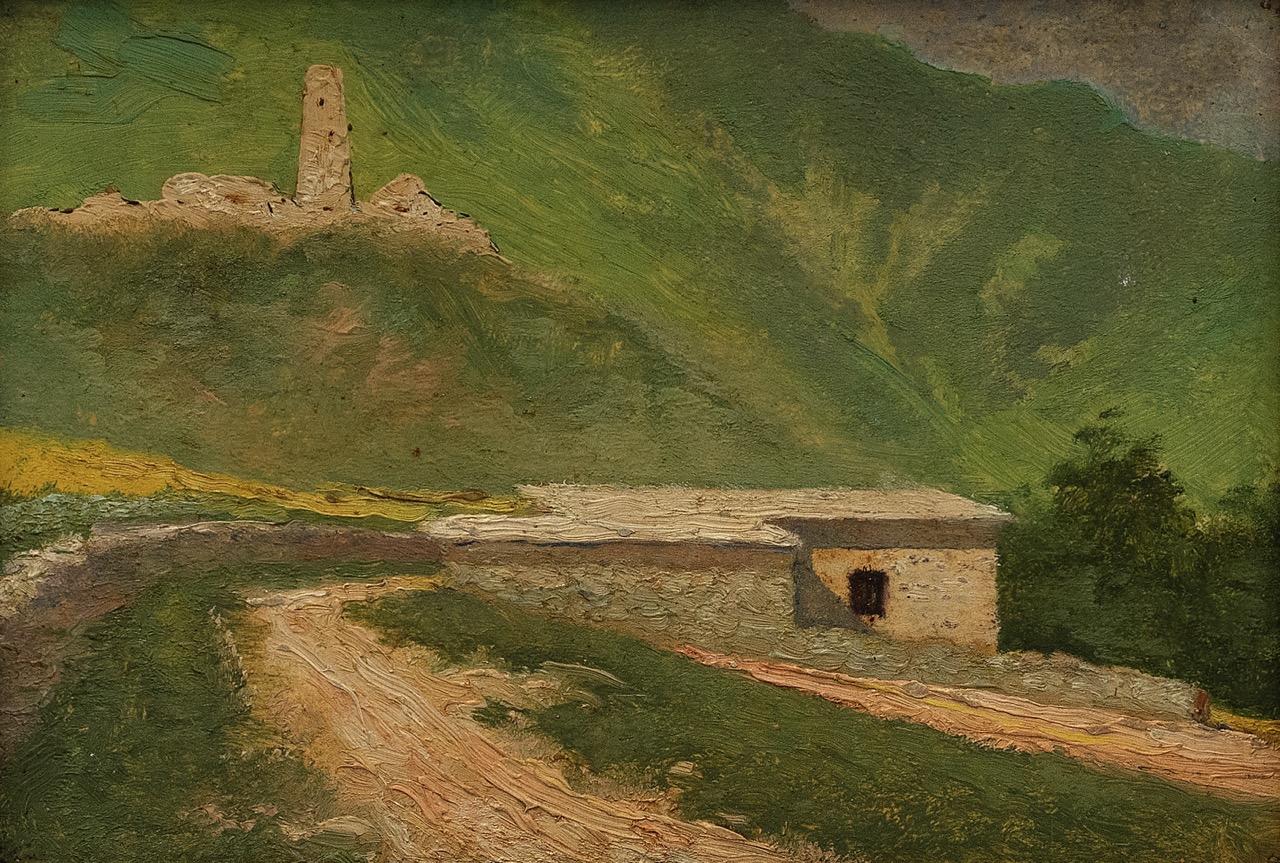
Valerian Sidamon-Eristavi. Landscape. 13x19cm. Oil on cardboard. 1920s. ATINATI Private Collection

Valerian Sidamon-Eristavi. Landscape. Oil in cardboard. 13X19 cm. 1920s. ATINATI Private Collection
Valerian Sidamon-Eristavi's efforts were noted by director Kote Marjanishvili, who asked him to be the artist for his play ‘The Sheep's Spring.’ A number of sketches of theatrical costumes for that play have survived: each is ornamental and conveys a refined harmony of color.
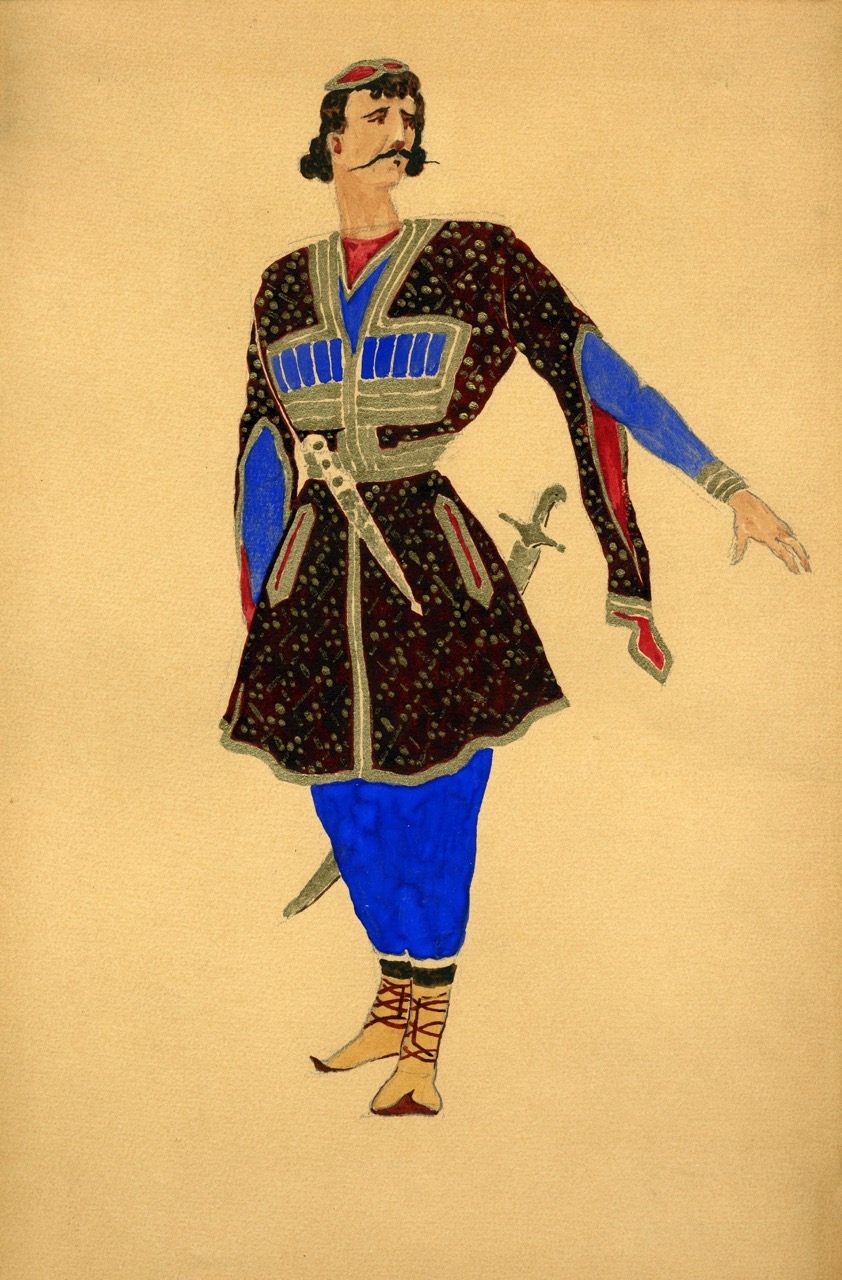
Valerian Sidamon-Eristavi. Costume sketch. Paper, mixed media. 34x22 cm. Private collection
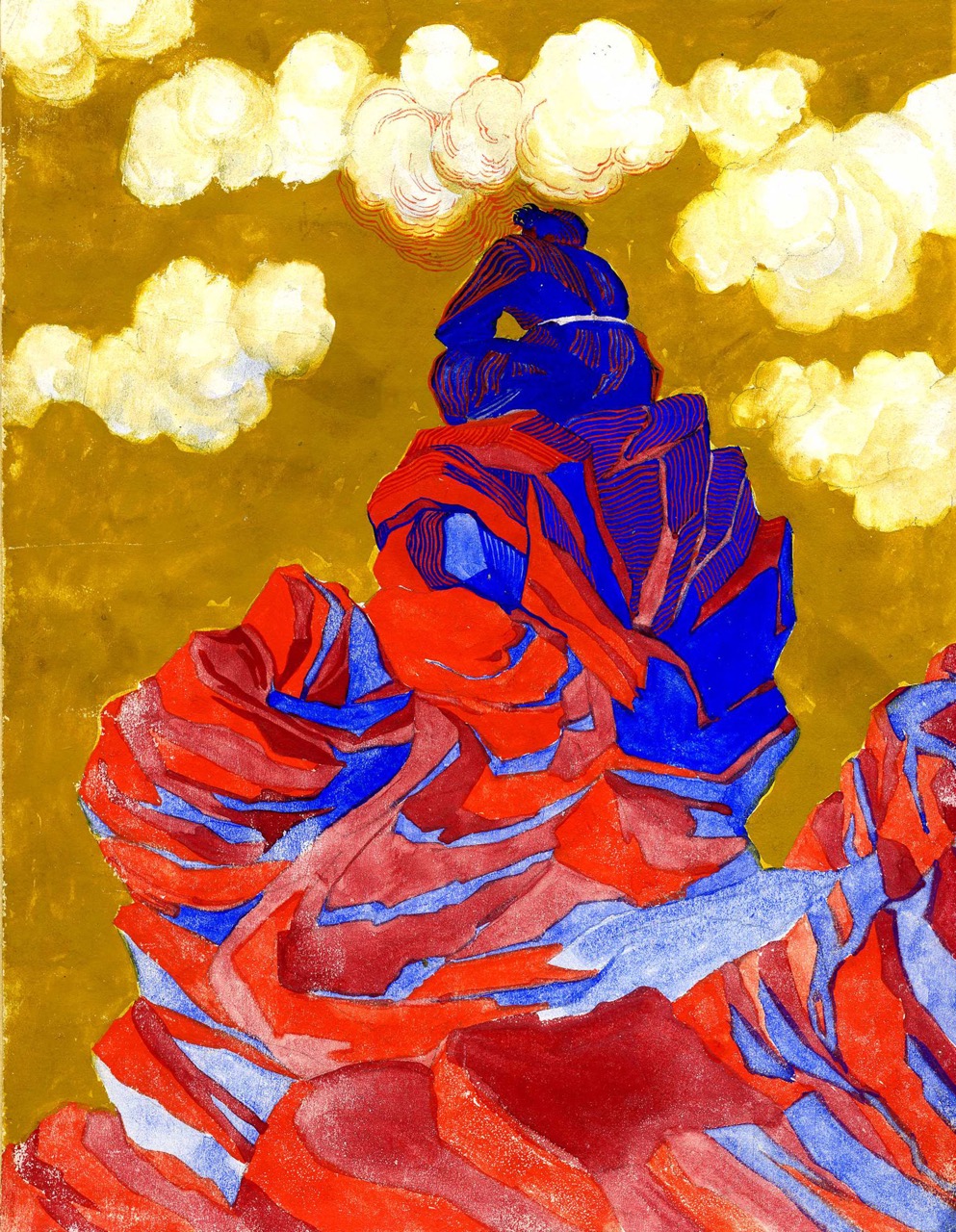
Valerian Sidamon-Eristavi. Sketch. Paper, mixed media. 20x16 cm. Private collection